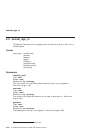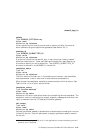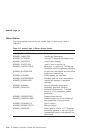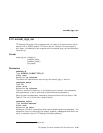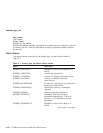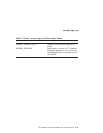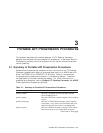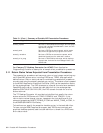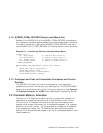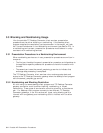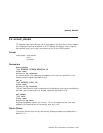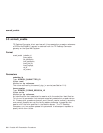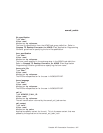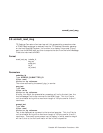
Table 3–1 (Cont.) Summary of Portable API Presentation Procedures
Customer-Supplied Procedure Description
acmsdi_request Services a TDMS Request exchange, which displays
a form and transfers data between a form and the
application program.
acmsdi_send Services a DECforms send request, which sends
data from the application program to the form.
acmsdi_transceive Services a DECforms transceive request, which
combines the actions of a send and a receive.
acmsdi_write_msg Services a TDMS Write exchange, which displays
the text sent from the form’s message field or the
ACMS task.
See Compaq TP Desktop Connector for ACMS Client Application
Programming Guide for a description of sample client presentation procedures.
3.1.1 Return Status Values Expected from Presentation Procedures
The presentation procedure routines must return a long integer containing any
valid OpenVMS status value, including DECforms, TDMS, and application-
defined values. Return status values for nonblocking presentation procedures
are returned using the acmsdi_complete_pp routine. The status value is passed
to the ACMS Application Execution Controller (EXC) as the completion status
for the exchange step. The EXC attempts to interpret the value as a standard
OpenVMS status value. Unless the task definition for the exchange step
specifies CONTINUE ON FAILURE, the EXC cancels the task for an error
status returned.
The TP Desktop Connector kit provides include files that specify the return
status values for DECforms and TDMS: FORMS.H and TDMS.H. If the
return status values change, you can regenerate the include files with the
command procedures, MAKE_FORMS_H.COM and MAKE_TDMS_H.COM, in
the ACMSDI$EXAMPLES directory.
To handle errors, specify the exception-handler syntax in the task definition.
To have a single ACMS application support both DECforms terminals and
graphical desktop systems, code the task definition to check for a DECforms
error status value.
3–2 Portable API Presentation Procedures



